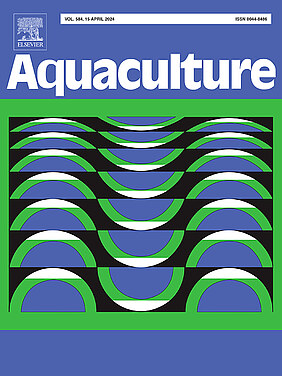Highlights
- Diets with low levels of fishmeal (5%) affected the sea bass immune condition.
- Shrimp protein hydrolysate had immunomodulatory properties.
- Sea bass fed shrimp protein hydrolysate had higher levels of serological non-specific immune parameters.
- Shrimp protein hydrolysate provided protection in front of opportunistic pathogenic bacteria Vibrio pelagius.
Abstract
This study was conducted to investigate the effects of the dietary supplementation of shrimp protein hydrolysate (SPH) on somatic growth performance, innate immune response in juvenile European sea bass (Dicentrarchus labrax) and their differential cumulative mortality when affected by a Vibrio pelagius natural infection outbreak. A diet containing 20% fish meal (FM) was used as a control, whereas three other diets differing in the level of FM inclusion (75 and 25% FM replacement by plant protein sources) and the inclusion of the additive (5% FM, 5% FM + 5% SPH and 15% FM + 5% SPH) were tested. After 110 days, there were no statistically significant differences in somatic growth parameters nor proximate composition in fish fed different experimental diets (P > 0.05), while the humoral non-specific immune responses (lysozyme, bacteriolytic and complement activities) were significantly enhanced by the inclusion of SPH in diets (P < 0.05). Additionally, an outbreak of the pathogenic bacteria V. pelagius, a bacterial species previously described as producer of the virulence factor hemolysin, occurred in all experimental tanks (4 replicates per diet) due to crowding and repeated handling stress for fish sorting. Survival rates among different experimental groups ten days after the bacterial epizootic differed depending on the diets, with groups containing SPH showing the best results (P < 0.05). In particular, fish fed the 15% FM + 5% SPH diet showed the highest survival rate (96.4 ± 5.0%), followed by those fed the 5% FM5 + 5% SPH5 (61.8 ± 16.3%). In contrast, survival rates in fish fed diets deprived of the additive (20% FM and 5% FM5 diets) were the lowest ones (32.0 ± 6.7% and 38.2 ± 13.5%, respectively). The present study showed that SPH can be incorporated in aquafeeds with high levels of FM substitution by PP sources without detrimental impact on the somatic growth performance of fish. In addition, the non-specific humoral immunity in seabass and their survival when affected by an epizootic outbreak of V. pelagius were positively affected, which showed the immunomodulatory benefits of shrimp protein hydrolysate to promote health and prevent diseases in fish.

